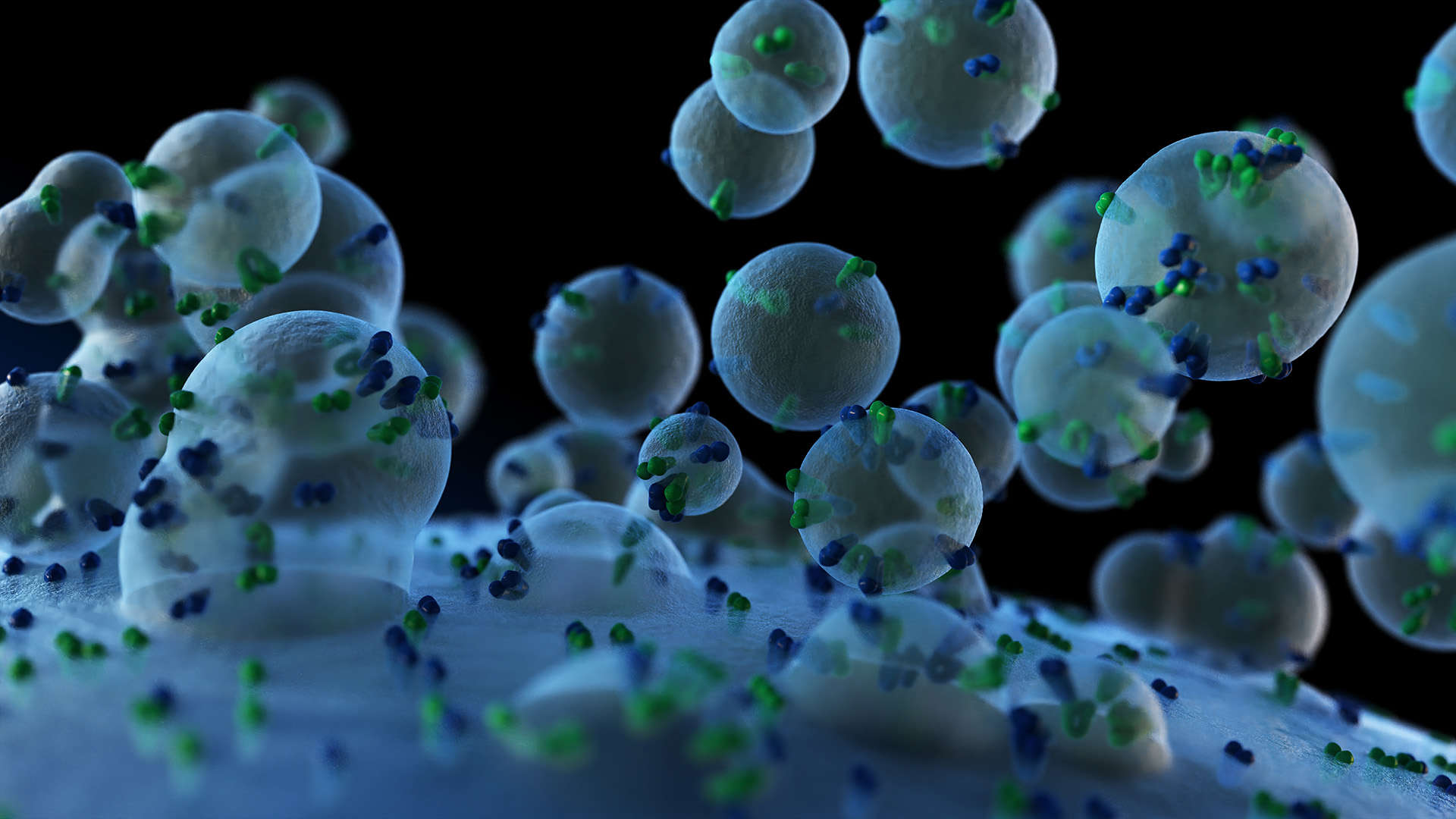Protein Structure Cryo-Electron Microscopy Analysis Service
Online InquiryCryo-electron microscopy (cryo-EM) three-dimensional reconstruction technology can analyze the high-resolution three-dimensional structure of biological macromolecular complexes. Cryo-electron microscopy is a rapid freezing and fixation of aqueous biological samples, which are imaged by electron microscopy under liquid nitrogen / helium conditions. Cryofixation solves the problem of dehydration of biological samples and improves the radiation damage tolerance of biological samples. Low-dose irradiation technology can precisely control the electron radiation dose in the imaging area, thereby avoiding unnecessary radiation damage to the sample.
Creative Proteomics has professional equipment and rich experience in protein structure analysis, and aims to provide you with one-stop cryo-electron microscopy analysis service.
The Process of Cryo-electron Microscopy Service
- Sample freezing: The sample solution is rapidly cooled so that water molecules have no time to crystallize, thereby forming an amorphous solid with little damage to the sample structure.
- Cryo-imaging: Screen samples based on particle concentration, distribution, and orientation. Then acquire a series of images and extract two-dimensional projection images through calculation.
- 3D reconstruction: The data is processed by the reconstruction software to generate accurate and detailed 3D models of subcellular and molecular-level complex biological structures.
The Methods of Cryo-electron Microscopy Service
According to the different characteristics of samples, the application of low-temperature electron microscopy three-dimensional reconstruction technology to study the three-dimensional structure of biological macromolecules is different. It can be roughly divided into four different methods: helical reconstruction, two-dimensional electron crystallography, single particle analysis, and electron tomography.
- Electron crystallography: The amplitude of the crystal structure factor can be measured directly from the electron diffraction spectrum. The phase can be obtained from the Fourier transform of the electron micrograph. By integrating the two and inverse Fourier transform, the structure density map of the corresponding projection direction of the crystal is obtained.
- Single particle analysis: Record high-resolution images of thousands of or even hundreds of thousands of particles (molecules) with the same but randomly oriented distribution of each sample by transmission electron microscope (TEM). These images are then grouped, aligned, and averaged using image classification algorithms to distinguish the different orientations of the three-dimensional molecules. Structural details can be displayed without using crystal samples. By observing frozen aqueous samples in glassy (amorphous) ice, the ultrastructure, buffer composition, and ligand distribution of the sample in its natural state can be retained.
- Electron tomography: Collecting multi-angle electron microscopy images of a sample by tilting the sample in a microscope and reconstructing these electron microscopy images according to the tilt geometry.
Image Processing:
- CTF correction
- Particle selection of sample molecular projection data
- Classification and noise reduction of 2D projection data (2D analysis)
- 3D reconstruction and refinement
- Heterogeneity analysis
- Structure resolution assessment
- Model interpretation and validation based on biochemical principles and experimental data
Applications of Cryo-electron Microscopy:
- Applications in structural biology. When cryo-electron microscopy is used to analyze the structure of biological macromolecules, it does not require a large number of samples and does not require crystallization. It can cooperate with biochemical and molecular biological methods to study the structure and function of biological macromolecules.
- Applications in biomedicine. Using this technology, the atomic resolution structure of biological macromolecules can be obtained. It is mainly used for high-resolution analysis of viruses, cells and intracellular microstructures and macromolecular complexes, such as three-dimensional reconstruction of viruses.
- Application in drug screening. It can distinguish smaller and higher resolution objects including small molecule complexes. Large-scale dynamic complexes and membrane proteins such as proteins that are not suitable for crystallization can also be obtained by single-particle cryo-electron microscopy.
Sample Requirements:
- Molecular weight: The molecular weight of the sample needs to be above 200kD.
- Buffer solution: The buffer solution must not contain organic substances such as polysaccharides, DMSO, glycerol, etc. These will reduce the contrast of the sample and it is difficult to obtain a high-resolution three-dimensional structure.
- Concentration: Usually the soluble protein concentration should be around 1mg / ml, and the membrane protein should be guaranteed to be around 5mg / ml.
- Volume: 20ul is sufficient (The premise is that the protein concentration needs to be up to standard).
- Uniformity: The behavior of the molecular sieve appears as a single peak with a uniformity greater than 90%.
Want to Know about Other Subcellular Protein Structure Analysis Techniques?
References
- Fernandez-Leiro R, Scheres S H W. Unravelling biological macromolecules with cryo-electron microscopy. Nature, 2016, 537(7620): 339-346.
- Frank J. Advances in the field of single-particle cryo-electron microscopy over the last decade. Nature protocols, 2017, 12(2): 209-212.
* For Research Use Only. Not for use in diagnostic procedures.



